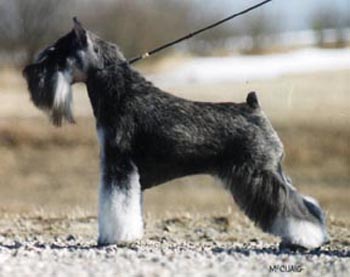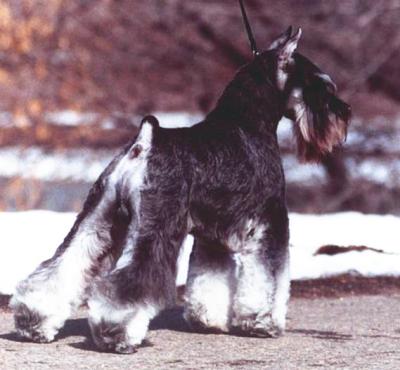14 years ago this month, I spent a very long, tiring day and night tending to the birth of a litter of puppies. When it was finally finished, I had a male and female puppy to show for my efforts – efforts, as it turned out, that were just beginning.
The mother was an older dog, one I had leased at considerable expense from a breeder in New York. Things started out well enough, but after a few days it was clear something was wrong. The puppies refused to gain weight. Her milk had turned toxic and they had to be removed and raised on a bottle.
Bottle feeding newborns is round the clock work. Every two hours they require feeding, then burping and cleaning. Night and day. It means guarding their temperature carefully – they cannot control it on their own. It means packing them in a little beer cooler to take to work with you. And usually, it means some will not survive despite your best efforts. The male died when he was a week old.
The remaining female was thus plunged into the perfect storm of dog psychology – a hand raised “singleton”. No competition from littermates. No discipline from an experienced mother. No rough and tumble games to learn the rules of bite inhibition. A surefire recipe for creating a canine sociopath with no fear.
And, it goes without saying, absolutely no gratitude.
By the time she was 6 weeks old, “Frankie” was a beady eyed package of self-centered malevolence – utterly without respect or remorse, demanding instant gratification. A cuddle was as likely to draw teeth as it was a “kiss”. Attempting to discipline her into submission could send one to the emergency room for digit reattachment.
This was my type of dog.
And she was beautiful. |
 |
She became officially known as Am/Can Champion Minuteman I Eat Tigers.
Frankie had a pretty respectable show career, ending up top female in the country in 1992. She was bred and had two top producing champion sons – she has descendants all over the world now. But, unlike most of my other show dogs, she was never placed in a retirement home, and has been the bane of my existence ever since.
She’s become especially baneful as of late.

A few days short of 14, she has long ago lost her springy step, her keen sense of hearing and her teeth. She sleeps 23 hours a day, waking only to eat and pee on my floor and occasionally, wander aimlessly about. On her bad days, I am the personal servant of a four legged ill tempered boa constrictor. On her good days, I am the personal servant of a four legged ill tempered boa constrictor – the only difference being the intensity with which her gums snap together in the air as she whirls around to strike.
In the fleeting moments that she is awake, she travels in stiff-legged, drunken, random bounds that do not always direct her in a meaningful direction. She gets stuck in corners, having completely lost reverse gear. She has become known as the “pinball pogo-stick dog”.
And she has forgotten how to get home.
Yesterday, I put her outside to enjoy a bit of sun in a warm part of the yard. The gate was closed, but the yard is not secure. I brought her in a little while later.
Or I thought I had. The hours rolled by into late afternoon, and it was time to feed the dogs. As I mixed bowls, I reached for Frankie’s and as I did, realized that I had not seen her for some time. Did I bring her in? I honestly couldn’t remember. A check of the yard revealed no old dog standing around in a daze, and two surveys of the dog run area confirmed I hadn’t put her out there.
Perhaps she had gone around the end of the garden and wandered down the sidewalk. It’s happened before.
I walked out to trace her usual path – she always wanders to the light pole at the corner to check out the smells, then heads north with the down slope of the street. Path of least resistance. How far north depends upon how long she’s left to wander. She’s not a fast mover. And if she encounters something solid, she will usually just stop and lean against it.
I searched up the street and the neighbor’s yard. No Frankie. No point in calling her name, as she either can’t hear, or doesn’t care to. Time for the bicycle.
I rode up and down the streets for at least an hour, down all the back alleys, along the golf course behind my house – slowly, checking in yards, under hedges, stopping to ask people on the street. Nobody had seen a thing. Finally, I decided that it was time to check back at the house in the improbable hope that she had turned back around and headed south to come in for dinner.
No Frankie. Time to get the truck out and have a proper look. As I walked through the kitchen to get my truck keys, something caught the corner of my eye.

Like I said, she has no reverse.
Frankie isn’t going to be with me for very much longer. She has an aggressive mammary tumour and it’s grown to a size that can no longer be ignored, and that will soon become painful , so we are taking things day by day. Today was supposed to be the day, but I changed my mind.
Again.
I just thought I’d share her with you.














